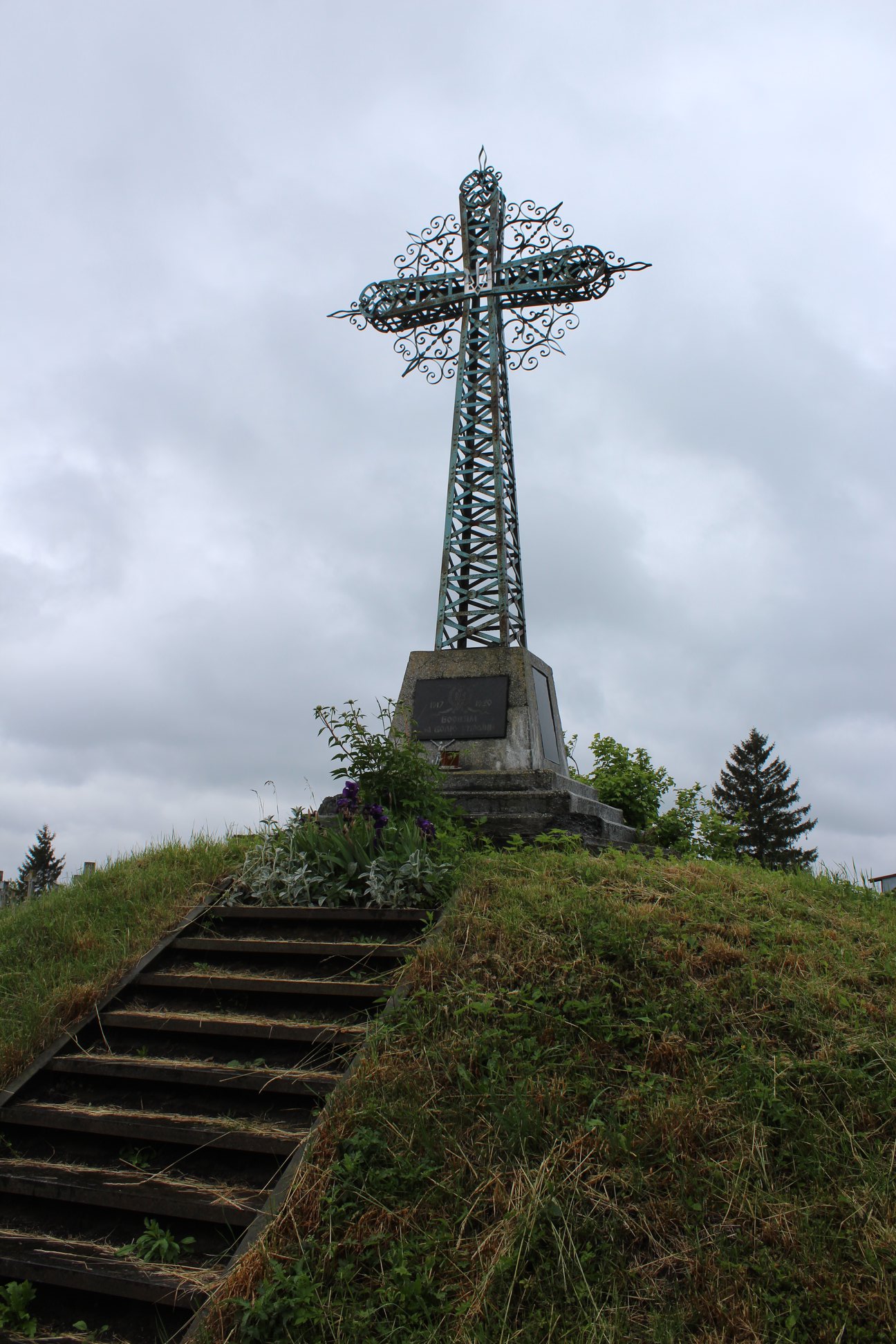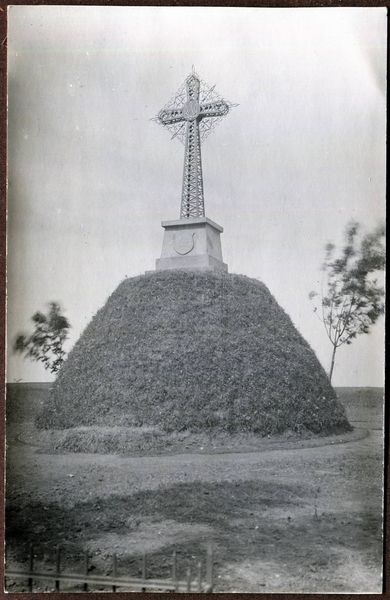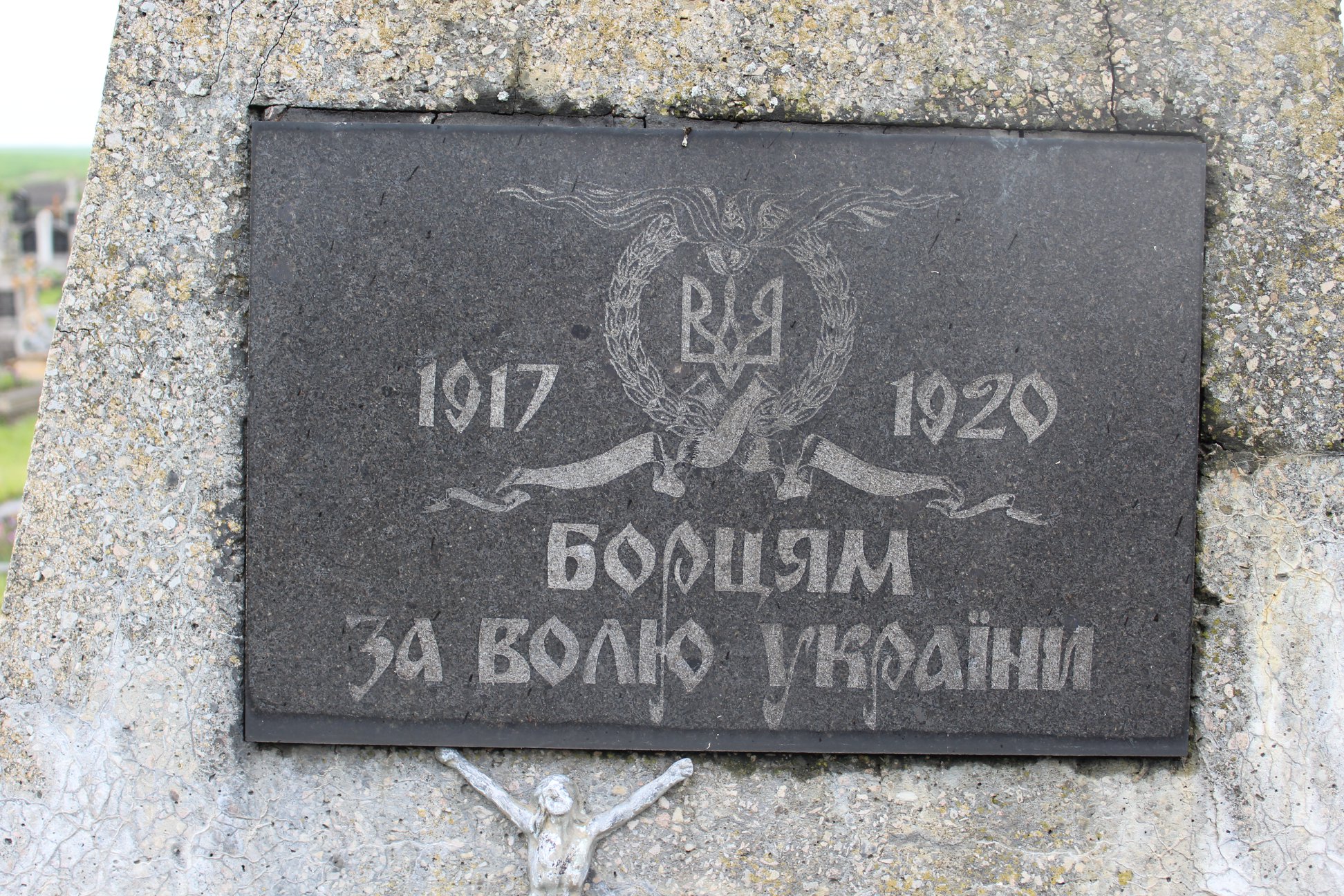
Ivan Shchurko wrote about the majestic, beautifully crafted, riveted metal cross on his Facebook page
Photos by Ivan Shchurko.
The aesthetics of the riveted cross resonate with the cross of Olena Kulchytska in Pikulychi, and the technical solutions with the cross of Markiyan Shashkevych on Bila Hora in Pidlis.

The cross is more than 5 metres high, with two granite tablets mounted on a concrete base. One with a list of deceased people from Spasiv, the other with an inscription:
1917-1920
To the Fighters for the Freedom of Ukraine
The cross has perfect proportions, high-quality technical and aesthetic/decorative solutions, and was built according to a design by one of the Ukrainian engineers/architects of the time.

Last year’s discovery of a historical photo of the grave in Spasiv (with an accompanying commentary) allowed us to outline the time of construction (March-April 1933).

The commentary states that by a separate decision dated 21.04.1933, the Polish authorities “forbade the starosta in Sokal to dedicate this cross and perform a service near it, because the community refused to remove the trident from the cross!”
The community probably wanted to dedicate the cross during Easter, but because of this ban, the dedication took place later, probably during the Green Feasts (Holy Trinity).
Green Holidays are the time when we traditionally honoured the graves of those who fought for the freedom of Ukraine.
Around the central, probably symbolic grave, there are several other riflemen’s and insurgent graves.

One of the most interesting is on the left, with a simple wooden cross, and now I can almost read the inscription on the wooden plaque:
“GRAVE +
PROKOP TOKAR
…RY ……..KSENI
ETERNAL MEMORY”
In other words, the grave is real, the Cossack Prokop Tokar and someone else, probably a certain Ksenia, are buried in it.
Why a Cossack?
Because there is a fragment of an inscription on the concrete frame of the grave:
“May the earth rest in peace by the pen of the Cossacks”.
From time to time, additions appear, in particular in the comments under the posts. Today we know that in Soviet times the metal cross was dismantled, and its stone base with cartouche and inscription were destroyed. The cross remained among the grasses in the corner of the cemetery.
The grave was restored and the authentic metal cross was returned to it in 1991 by a team led by Vasyl Kiyko.
I came to Spasiv thanks to Bohdan Koziychuk, a student, future lawyer, and now an active community activist and patriot of his native village.
I hope that Bohdan is working on adding to the history of this extraordinary monument.
I also hope that the community protects and cares for these graves, preserving their architectural, historical and artistic value, each of the smallest elements.
Post fifteen! May the earth be yours, Cossack!

